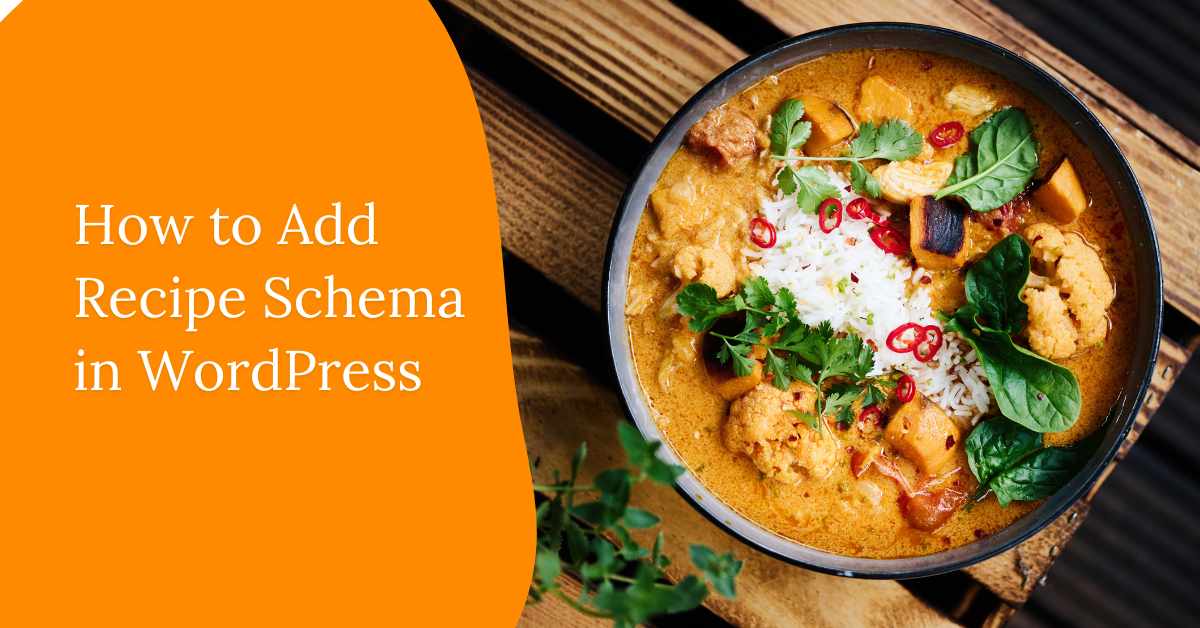By adding recipe schema to your WordPress site, you’re not just enhancing your recipe posts for better visibility and user experience. You’re also opening up a world of opportunities for your content to be displayed in a rich format, including images, ratings, cooking time, and more, directly in search results. This can significantly boost your click-through rates and improve your site’s SEO, potentially leading to increased traffic and engagement.
Adding recipe schema to your WordPress site is not a complex task. In fact, it’s pretty straightforward. Here’s a step-by-step guide that will walk you through the process, making it easy to add recipe schema and reap the benefits.
Step 1: Install a Recipe Plugin
Adding recipe schema to your WordPress site is a breeze with a dedicated recipe plugin. You have a variety of popular options to choose from:
- WP Recipe Maker: A user-friendly plugin that allows you to add recipes with schema markup.
- WP Tasty Recipes: Another excellent option that provides robust schema support and beautiful recipe templates.
- Recipe Card Blocks by WPZOOM: A Gutenberg-friendly plugin that makes adding recipes simple and visually appealing.
Installing a Plugin
- Go to your WordPress Dashboard.
- Navigate to Plugins > Add New.
- Search for the desired recipe plugin (e.g., WP Recipe Maker).
- Click Install Now, then Activate the plugin.
Step 2: Create a Recipe Post
Once you have installed and activated your recipe plugin, you can add recipes to your posts.
Using WP Recipe Maker as an Example
- Go to Posts > Add New to create or open an existing post.
- Click on the WP Recipe Maker icon in the editor to add a new recipe.
- Please provide the recipe details, including the title, ingredients, instructions, cooking time, servings, and other relevant information.
- Add images or videos, if desired, to make your recipe more engaging.
- Save or publish your post when you’re finished.
WP Recipe Maker will automatically add the necessary schema markup to your recipe, ensuring it is optimized for search engines.
Step 3: Customize Recipe Schema (Optional)
While recipe plugins typically handle schema markup for you, advanced users may want to customize the schema further. This can be done by editing the schema JSON-LD code directly.
Manually Adding Recipe Schema
If you prefer not to use a plugin, you can manually add recipe schema using JSON-LD format. Here’s a basic example:
<script type=”application/ld+json”>
{
“@context”: “https://schema.org/”,
“@type”: “Recipe”,
“name”: “Chocolate Chip Cookies”,
“image”: [
“https://example.com/photos/1×1/photo.jpg”,
“https://example.com/photos/4×3/photo.jpg”,
“https://example.com/photos/16×9/photo.jpg”
],
“author”: {
“@type”: “Person”,
“name”: “John Doe”
},
“datePublished”: “2023-01-01”,
“description”: “A classic chocolate chip cookie recipe.”,
“prepTime”: “PT20M”,
“cookTime”: “PT15M”,
“totalTime”: “PT35M”,
“recipeYield”: “24 cookies”,
“recipeIngredient”: [
“2 cups flour”,
“1 cup sugar”,
“1 cup chocolate chips”,
“1/2 cup butter”,
“2 eggs”,
“1 tsp vanilla extract”,
“1/2 tsp baking soda”,
“1/2 tsp salt”
],
“recipeInstructions”: [
{
“@type”: “HowToStep”,
“text”: “Preheat oven to 350 degrees F (175 degrees C).”
},
{
“@type”: “HowToStep”,
“text”: “In a bowl, cream together the butter and sugar.”
},
{
“@type”: “HowToStep”,
“text”: “Beat in the eggs one at a time, then stir in the vanilla.”
},
{
“@type”: “HowToStep”,
“text”: “Combine flour, baking soda, and salt; gradually blend into the creamed mixture.”
},
{
“@type”: “HowToStep”,
“text”: “Stir in the chocolate chips.”
},
{
“@type”: “HowToStep”,
“text”: “Drop by rounded spoonfuls onto ungreased cookie sheets.”
},
{
“@type”: “HowToStep”,
“text”: “Bake for 8 to 10 minutes, or until golden brown.”
}
]
}
</script>
Adding JSON-LD to Your Post
- Copy the JSON-LD code.
- Edit the post where you want to add the recipe schema.
- Switch to the Text/HTML view in the editor.
- Paste the JSON-LD code at the beginning or end of your post.
- Save or publish your post.
Step 4: Test Your Schema Markup
To ensure your schema markup is correctly implemented, you should test it using Google’s Rich Results Test or the Schema Markup Validator.
Using Google’s Rich Results Test
- Go to Google’s Rich Results Test (https://search.google.com/test/rich-results).
- Enter the URL of your recipe post or paste the HTML code.
- Click Test URL or Test Code.
- Review the results to ensure there are no errors in your schema markup.
Step 5: Monitor and Update
Remember, schema standards and search engine algorithms evolve. To ensure your recipe schema remains effective, monitoring and updating it periodically is crucial. Keep an eye on updates from your recipe plugin and make necessary adjustments to your manual schema.
—
Alternatively, to simplify the process further, consider choosing a WordPress Recipe blog theme with built-in recipe schema support, which often includes metadata and JSON-LD structure.
Conclusion
Adding recipe schema to your WordPress site is not just a theoretical concept. It’s a proven method that can significantly enhance SEO and user engagement. Whether you use a plugin or add schema manually, following these steps will help ensure your recipes are easily discoverable and visually appealing in search results. By regularly updating and testing your schema markup, you can maintain a competitive edge in the food blogging space, knowing that your efforts are effective and reliable.
